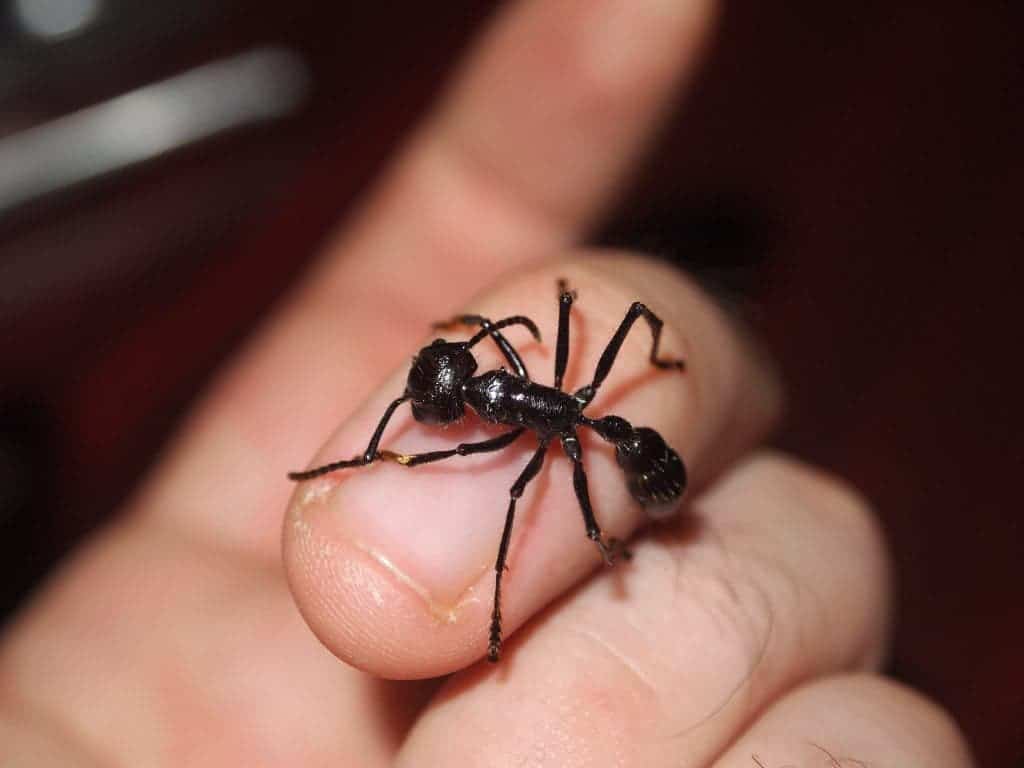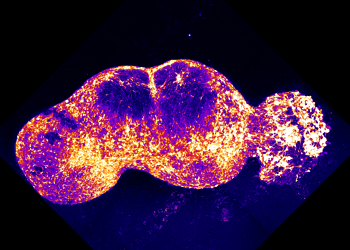Quick: Imagine the worst pain you’ve ever felt. Now, triple it.
That may sound really harsh but believe it or not, chances are it would still not come close to being stung by the bullet ant, the largest ant in the world. Native to the western rainforests of South America, this insect packs a nasty venomous bite that’s believed to be thirty times more painful than a bee’s sting.
Arguably, it’s the worst pain known to man

“With a bullet ant sting, the pain is throughout your whole body,” adventurer and naturalist Steve Backshall described on a recent episode of the BBC’s Infinite Monkey Cage. “You start shaking. You start sweating […] It goes through your whole body.”
“Your heart rate goes up, and if you have quite a few of them, you will be passing in and out of consciousness. There will be nothing in your world apart from pain for at least three or four hours.”
Like bees, Parponera clavata will only release its potent venom in defense, when threatened. Unlike other ants, there are usually only a few hundred of them in each colony or nest. Nests are usually located at the bases of trees. The worker ants forage all the time in the trees, even getting up to the canopy, but seldom forage on the forest floor.
The queen Bullet Ant is a lot bigger than the workers (who are usually about 20 mm to 30 mm in length). The workers are unyielding, look a bit like a wingless wasp, are reddish-black in color, and are very predacious.

Becoming a man
Some people are hardcore masochists and actively seek this excruciating pain. In the case of tribesmen of the Satere-Mawe in Brazil, the reward for wrestling with the bullet ant is manhood.
To become initiated as a warrior, teenage boys must wear gloves filled with numerous bullet ants inside for a full five minutes. During this whole rite, it’s imperative you maintain a calm composure. Initiates must repeat the process at least 20 times to ascend to manhood.
It comes at a price, though. Each session leaves the hand swollen, bruised, and paralyzed temporarily. The boy might experience uncontrollable shakiness for days after the rite. That’s why the 20 trials are spread out over several months.
One documentary filmmaker, Hamish Blake, tried on the ant gloves for an Australian TV documentary. He could only bear wearing the gloves for a few seconds, which earned him eight hours of excruciating pain.
The bruises heal quickly, and the paralysis fades away. In a mere 24 hours, the active ingredient, a neurotoxin called poneratoxin, is completely flushed out of the body.
But despite the inhumane amount of pain a bullet ant can cause, its sting won’t actually kill you. According to toxicological estimates, it would take 2,250 stings to kill a 165-pound human.
“It’s an almost completely pure neurotoxin,” Backshall said. “One of the reasons why people can use it for tribal initiation ceremonies is because although it causes extraordinary pain, it’s not dangerous. There’s almost no allergens. There’s no danger of a histamine reaction to the venom.”
It’s easy to understand why the Satere-Mawe people cherish their practice so much. Following the rite, the body is completely filled with adrenaline — a rush that can last for weeks.
Adrenaline is a key component of our body’s fight-or-flight response and is used to squeeze every last drop of performance out of our bodies in order to keep us alive. Its most obvious effects include increasing blood flow, heart rate, and pupil dilation. Adrenaline also primes our internal organs for emergencies by increasing blood sugar levels, altering which compounds our bodies prioritize during digestion and how we perceive emotion (it shifts everything closer to fear and/or aggression).
On the bright side, adrenaline makes us more alert, pushes our muscles into overdrive, and makes us more focused.
Because the bullet ant’s bite is so immensely painful, and because of the sheer number of bites a Satere-Mawe would be exposed to during their initiation right, their nervous systems register it as a particularly dangerous threat — and release a deluge of adrenaline to help them fight it off or run away from it.
“You have such a massive overdose of adrenaline that you feel like a god. For a week afterwards I felt like if I leapt off a cliff I could have flown,” Backshall said.
Ironically, poneratoxin is being explored as a possible pain reliever. In subtle doses, some researchers have found it acts to block pain.






